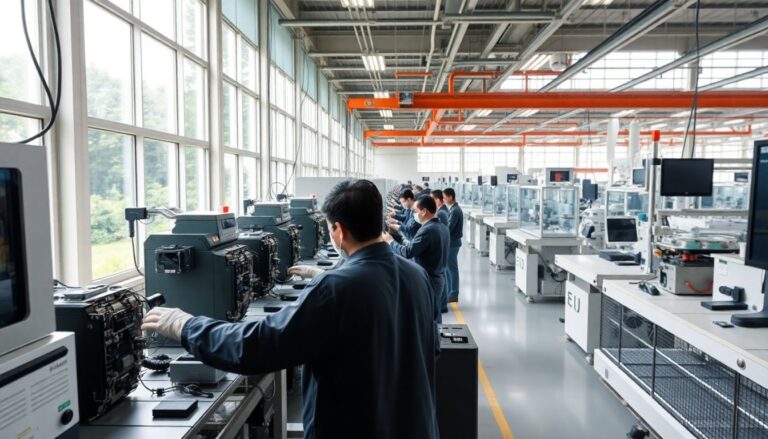Argomenti trattati
In the ongoing competition for dominance in the artificial intelligence sector, China is making substantial advancements in its chip manufacturing capabilities. Local authorities are reportedly implementing energy incentives targeted at major tech companies, including ByteDance, Alibaba, and Tencent. These initiatives aim to reduce energy costs for these firms while fostering the domestic production of AI chips and processors, thereby decreasing reliance on foreign technology.
Over the past year, tensions between the United States and China have escalated, primarily concerning access to advanced hardware such as Nvidia GPUs. The U.S. has introduced tariffs, export restrictions, and limitations on access to rare earth materials, prompting China to expedite the development of its own AI hardware, including graphics processing units (GPUs) and application-specific integrated circuits (ASICs). To support this transition, Chinese authorities have restricted the use of Nvidia GPUs, encouraging local tech firms to seek domestic alternatives.
The rise of domestic chip manufacturing in China
One of the major challenges in this transition is the outstanding performance of Nvidia GPUs, known for their superior speed and efficiency. Chinese alternatives, such as those produced by Huawei and Cambricon, often struggle to compete. A significant factor in this gap is the limited access to the latest EUV lithography tools from ASML, which are crucial for manufacturing advanced chips. Consequently, locally developed chips face considerable obstacles in matching their international counterparts.
Energy subsidies and their impact on the tech industry
To mitigate the rising energy costs associated with high-performance chip production, Chinese government officials are introducing energy subsidies aimed at easing the financial strain on local tech companies. Regions such as Gansu, Guizhou, and Inner Mongolia, which host numerous data centers, are offering substantial incentives that could reduce energy expenses by up to 50%. However, data centers that utilize foreign GPUs or chips, including those from Nvidia, are excluded from these subsidies.
This strategic approach serves dual purposes: it aligns with the central government’s objective of enhancing domestic production and attracts data center operations to these regions, fostering healthy competition among local governments for contracts. Funding for these initiatives is sourced from the ambitious $50 billion Big Fund III, established to bolster China’s chip design and manufacturing sectors. This year, the government is anticipated to invest nearly $100 billion to accelerate the growth of its domestic chip industry.
Comparing investment strategies between China and the U.S.
Meanwhile, American companies such as OpenAI, Oracle, and CoreWeave are investing hundreds of billions in AI infrastructure development. They are building extensive data centers and engaging in reciprocal purchasing of services and hardware. Despite China’s significant investments, analysts from Goldman Sachs estimate that Chinese tech firms will invest approximately $70 billion in data center development by 2026, which is considerably less than their U.S. counterparts.
Energy constraints as a limiting factor
Interestingly, despite the larger investments in AI infrastructure in the U.S., energy availability may emerge as a critical constraint. Microsoft CEO Satya Nadella has noted that the company is unable to utilize certain GPUs and AI chips due to insufficient energy resources. Similarly, Elon Musk‘s xAI has been acquiring gas turbines in large quantities and is even considering importing a power station. This underscores a pressing concern: the rapid expansion of AI data centers is exerting tremendous pressure on existing energy supplies.
While small, modular nuclear reactors could offer a potential solution to these energy constraints, implementing such technologies is neither straightforward nor swift. Furthermore, despite a rise in global solar energy installations, including significant growth in China, the overall energy supply may still struggle to meet demand.
As China continues to enhance its nuclear and hydropower capabilities, it may find itself in a favorable position in the coming years, particularly if energy proves to be a more significant bottleneck for AI development than computational power alone.

